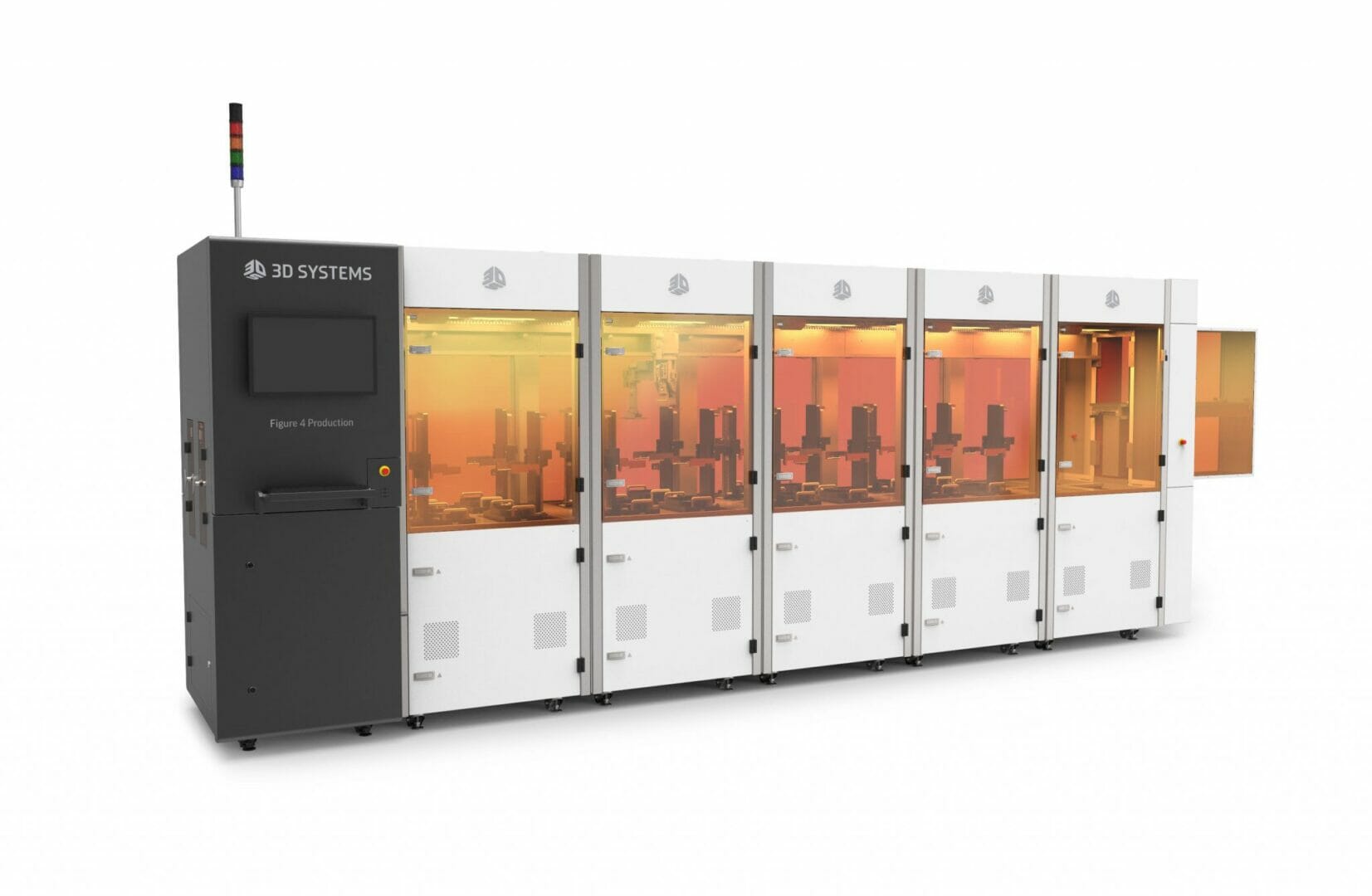3D Systems (NYSE: DDD) has announced that its Figure 4™ Production system has been selected for the U.S. Air Force-sponsored research focused on integrating high-speed 3D printing into the aircraft maintenance supply chain. Overseen by America Makes, the national additive manufacturing innovation institute, and led by the University of Dayton Research Institute (UDRI), this initiative project brings together 3D printing and aerospace manufacturing leaders, including 3D Systems, Lockheed Martin, Orbital ATK and Northrop Grumman.
Through this project, the U.S. Air Force will explore how 3D Systems’ Figure 4™ Production system can be used to reproduce aircraft components for decades old planes that may no longer have reliable sources of replacement parts. This effort demonstrates capabilities for rapidly delivering replacement parts just-in-time without minimum order quantities – eliminating the need for parts warehousing and reducing time of aircraft on ground.
According to America Makes, legacy aircraft used by the U.S. Air Force require parts that may be out-of-production due to manufacturing obsolescence, costs to create, low-quantity requirements, poor documentation, or other availability-related challenges. The “Maturation of Advanced Manufacturing for Low-cost Sustainment” (MAMLS) programme – an America Makes programme funded by the Air Force Research Laboratory (AFRL) – has just reached Stage III and announced multiple awards on three key topics that will have the most impact for defence maintenance, sustainment and logistics and the overall strategic readiness of the USAF and DOD.
While 3D Systems Direct Metal Printing and stereolithography technology had been featured in prior MAMLS phases, this new project marks the first time the U.S. Air Force will deploy what it calls Digital Light Processing (DLP) technology to supply low criticality components, including electrical connectors, knobs, elastomeric grommets, and spacers for legacy sustainment equipment.
Figure 4 was selected by this team over any other DLP machine because it is the fastest, most accurate 3D printing technology available. Recently released data on Figure 4 Production highlights part print speeds up to 65mm/hr, with prototyping speeds of up to 100 mm/hr. The Figure 4 platform delivers part accuracy and repeatability, with Six Sigma repeatability (Cpk > 2) across all materials. The combination of speed and accuracy complemented by a light-based UV curing process that takes minutes versus hours with heat-based curing processes, yields the world’s fastest additive manufacturing throughput and time-to-part. This substantially cuts down the time required to manufacture parts, enabling faster repair and reduced time of aircraft on ground.
“We were pleased with the speed, resolution, surface finish, and scalability that we achieved using 3D Systems’ solution,” said Dr. Tim Osborn, research scientist: additive manufacturing, multiscale composites and polymer division, University of Dayton Research Institute. “Our goal is to further explore this technology and establish a clear development, vetting, and transition pathway for the emerging DLP technology in the Figure 4 machine for transition to the U.S. Air Force.”
“Additive manufacturing is the perfect lean solution because it avoids the need for time-consuming and costly tooling,” said Chuck Hull, co-founder and chief technology officer, 3D Systems. “We are pleased to support the U.S. Air Force in its effort to reduce production costs and delivery times through Figure 4, our novel additive manufacturing technology. We look forward to our continued collaboration with UDRI and other partners – helping expand their arsenal of Figure 4 applications.”

Digital Light Processing (DLP) technology will be used to supply low criticality components for legacy sustainment equipment. Credit: University of Dayton Research Institute







